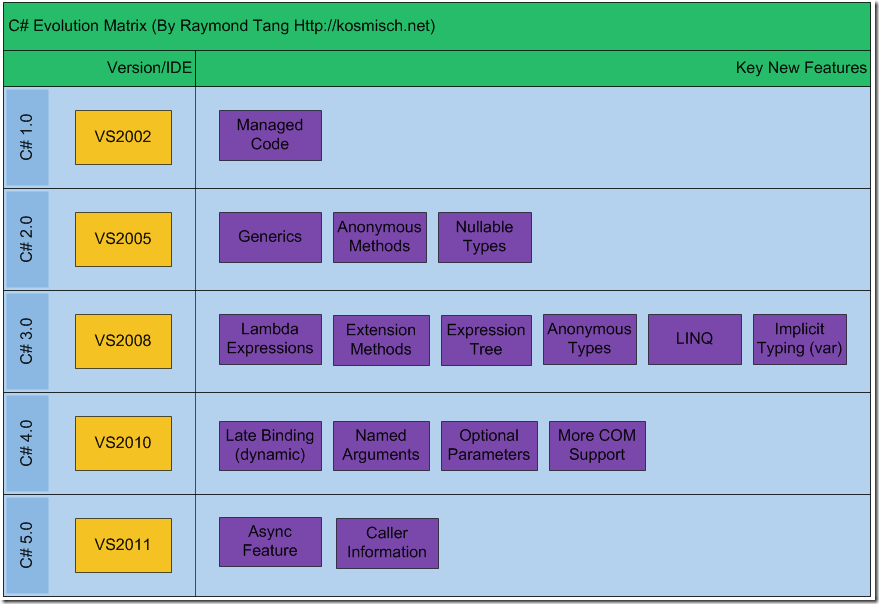Top MVP Monday Posts of 2012
MVPs have shared their expertise and skills throughout 2012 by guest blogging for our MVP Monday series. Here are the top 5 posts of 2012. Thanks MVPs for your tireless contributions to the technological community!
5. Using sys.dm_os_ring_buffers To Diagnose Memory Issues in SQL Server
By SQL Server MVP Grant Fritchey
Because of the ways that SQL Server interacts with the Windows operating system, memory and memory management between the two can be pretty confusing. If you just look at the allocated memory within the operating system on a standard SQL Server configuration you’ll probably see all, or most, of the memory is used up by SQL Server. Within SQL Server if you look at resource counters like total server memory, these too don’t provide much information to help you determine whether or not you are experiencing pressure due to inadequate memory on your system. You need to be able to quickly and easily determine if you are experiencing memory issues. Taking advantage of the dynamic management object (DMO) sys.dm_os_ring_buffers can get you that quick and accurate determination if you have memory problems and if they’re coming from the Windows operating system or within SQL Server. To read the entire post, click here
4. MVPs for Office 365: Pre-Populating InfoPath 2010 Forms
By SharePoint Server MVP Clayton Cobb .
One of the most powerful features of InfoPath 2010 is the ability to dynamically populate fields in the form
with already-known data without input from the user – or with minimal input. With out-of-the-box (OOTB)
list forms, we cannot do this, which makes OOTB forms very limiting in their native form. However, once
we switch to InfoPath forms,the possibilities increase immensely.
In this article, we will provide a prequel to the article by Laura Rogers named SharePoint Designer
Workflow Tasks and InfoPath 2010. In that article, Laura showed us how to display relevant Expense
Report data when working with task forms within a SharePoint Designer workflow. In this article, I will
show you how to auto-populate data in the original form that the user is filling out to trigger the workflow,
and my scenario will be a Leave Request approval system, which is another common process in most
organizations. To read the entire post, click here
3. SQL Server 2012: Migrating BLOBs to FILETABLEs
by SQL Server MVP Matija Lah
The storage of large data used to present quite a challenge in previous versions of SQL Server, especially prior to SQL Server 2008. Although appropriate data types were already available in earlier versions of the platform (e.g. IMAGE, VARBINARY(MAX), or even TEXT, or NTEXT data types), the maintenance, as well as consumption, of large data, stored in the database, was cumbersome at best. This left many database developers with two choices: either to store large data in the database and face all the challenges of moving it in and out of there, or place it outside the database and deal with another set of similarly difficult challenges of keeping the files in sync with the metadata.
Large data management has changed significantly with the arrival of SQL Server 2008, introducing FILESTREAM, an alternative method of storing large data in a dedicated filegroup (rather than together with the rest of the data); in a way that also allowed client applications direct access to large object files. The client application could, after receiving an appropriate file handle from the Database Engine, consume the file as a stream, rather than having to load it in its entirety, and twice for that matter – first into the Database Engine, and then into the application. To read the entire post, click here
2. Leveraging Office 365 for Project Collaboration Success
By SharePoint Server MVP Dux Raymond
Are you stuck in an environment where project management procedure is more of a happy accident than a smooth process that properly employs tools that will enhance collaborative processes on projects?
Currently, you may be working in an enterprise where most project management efforts are ad hoc and not organized for maximum efficiency and effectiveness. In such scenarios, you may be used to using email, spreadsheets, Word documents, a file share (or ideally, SharePoint), and mobile devices to manage your projects.
These tools are integral to effective collaboration, but they don’t always provide a keenly robust project management solution on their own, without an established process in place to define how they’re used and integration to ensure that all project information is synced and collected in a central location. To read the entire post, click here
1. An Introduction to New Features in C# 5.0
By Visual C# MVP Fahao Tang
1. C# Evolution Matrix
Microsoft just published a new version of C# : 5.0 beta with CLR version 4.5 (Visual Studio 11 beta).
In order to get a big picture of the whole evolution of C# language, I summarized all the key features
into a C# Evolution Matrix for your reference as below diagram shows:
To read the entire post, click here
About MVP Mondays
The MVP Monday Series is created by Melissa Travers. In this series we work to provide readers with a guest post from an MVP every Monday. Melissa is a Community Program Manager, formerly known as MVP Lead, for Messaging and Collaboration (Exchange, Lync, Office 365 and SharePoint) and Microsoft Dynamics in the US. She began her career at Microsoft as an Exchange Support Engineer and has been working with the technical community in some capacity for almost a decade. In her spare time she enjoys going to the gym, shopping for handbags, watching period and fantasy dramas, and spending time with her children and miniature Dachshund. Melissa lives in North Carolina and works out of the Microsoft Charlotte office.
